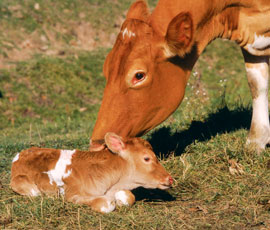Good health cuts herd emissions

With the pressures currently being faced by the livestock industry, climate change and the need to reduce greenhouse gas (GHG) emissions does not seem to be an immediate priority. However, are we in danger of missing a big opportunity?
‘The Greenhouse Gas Action Plan (GHGAP)’ launched on 4 April sets out how the industry can reduce emissions by thee million tonnes of CO2 equivalents (almost 11%) by 2020. The plan focuses on how farmers can reach the target while saving costs and without compromising production.
It has been claimed that agriculture contributes about 9% of UK GHG emissions (measured in CO2 equivalents) and globally more than all means of transport. Agriculture must be seen to be playing its part in combating climate change by considering changes to farming systems and management methods.
Farm minister Jim Paice has challenged agriculture to proportionally reduce its emissions in line with other industries, but has offered support to meet government GHG targets.
This issue is not going to go away, but which farming methods result in the best environmental outcomes?
I teamed up with leading herd health vets Martin Green, James Husband and Jonathan Huxley to ask whether there are potential areas of benefit or conflicts between environmental issues and animal health/welfare & production.
This may actually be an opportunity to improve production efficiency and take a fresh look at how a more sustainable approach may be good for the environment and farm businesses. Could support for climate change controls actually translate into support for improved health and fertility in UK herds and flocks through more efficient production?
Calculating farm C footprints
Whole-farm “carbon footprinting” involves examining all aspects of the farming enterprise that cause production of GHG and calculating the total CO2 equivalents for every litre of 4% butterfat corrected milk produced. The main categories are:
1. Livestock – purchased feed, bedding, enteric fermentation, manure management, purchase/contract rearing.
2. Cropping – fertilizer manufacture and spreading, manure spreading.
3. Fuel and Energy use.
Many environmental improvements have associated financial benefits:
• Segregating roof water for washing down parlour standings
• Using plate coolers to cool milk
• Producing nutrient plans matched to slurry analysis
• Direct slurry injection to reduce nitrogen losses and anaerobic spoilage
• Fuel-efficient tractors
But less commonly highlighted opportunities include:
• Feed management (eg, avoiding over-mixing rations)
• Improved health and fertility (eg, each day of calving interval extension costs about 18kg of CO2 produced/cow/day)
Feeding management
Feeding ionophores such as monensin (currently banned in the EU) and some unsaturated oils, such as linseed, may reduce methane production and more research in this area is needed.
Feeding more starch and less fibre to a dairy cow means relatively more propionate and less acetate and butyrate are produced in the rumen, leading to less methane production. A herd producing 8000 litres/year, with a relatively high starch diet will have a lower methane production/litre (assuming an equivalent feed rate) than a herd producing the same milk on less starch and higher digestible fibre. However, such starch based diets have the potential to cause acidosis and negative effects on cow health/welfare and production.
Efficient milk production.
For any dairy system, if fewer cows (and replacements) are required to produce target milk output with fewer “lost” litres of milk, then the environmental impact for every litre of milk sold or every animal on the unit will be reduced. Lost milk here includes discarded milk following treatment or yield reduction following disease or poor reproductive performance. A reduction in GHG/litre of saleable milk, is a consequence of improved health and fertility because fewer cows at a given level of production, are required to produce the same quantity of milk.
In terms of fertility alone, a 25% reduction in methane emissions appears to be possible. Milk recording data suggests about 25% of herds cull more than 30% of cows a year. The difference in environmental impact between the best and poorest performing herds is likely to be large.
Improving health and fertility to reduce the environmental impact of dairying is also beneficial for cow welfare and farm financial returns. The partnership between farmers and vets has the opportunity to be central to this process.
Jonathan M E Statham, Bishopton Veterinary Group
